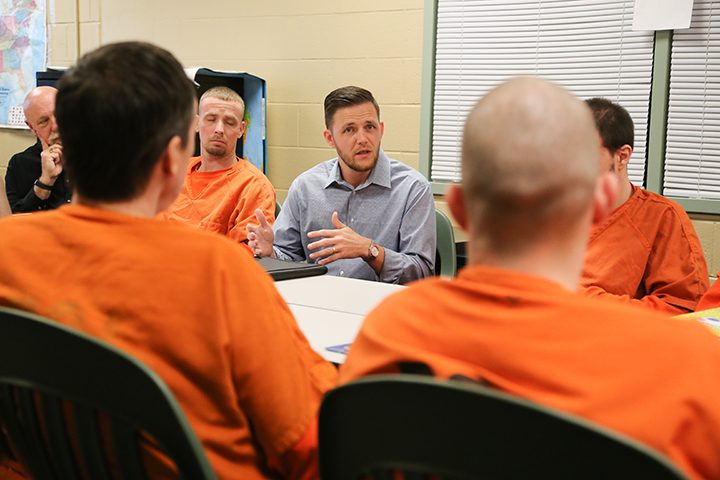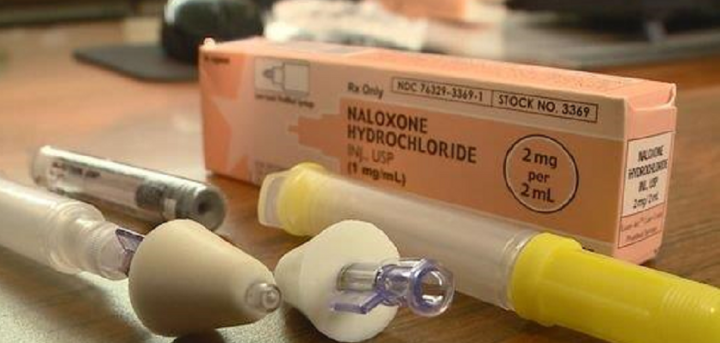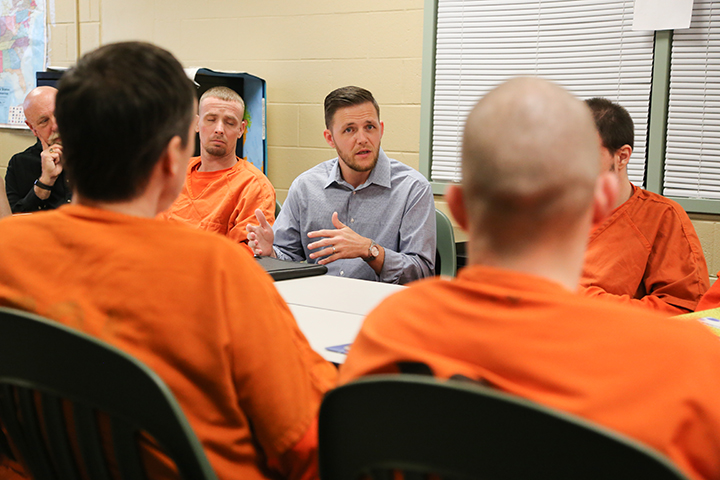
By Heather Lusk
Opiate use is on the rise in Indiana, and Boone County is no exception.
Boone County Sheriff Mike Nielsen began 2017 implementing a five-year plan, part of which focuses on education, prevention and enforcement to fight an epidemic on opioids including heroin and prescription drugs codeine, hydrocodone and oxycodone.
“We will make some progress in 2017, but I think we’ll see real progress after the implementation phase,” he said. “The rubber’s going to hit the road in 2018.”
Nielsen was able to implement the plan after a .5 percent increase in local income tax was approved in October, allowing the sheriff’s department to add corrections officers and mental health counselors to the staff effective March 1.
The tax increase will also support all of the county’s public safety organizations and will allow the addition of officer wellness programs to be rolled into the mental health plan, addressing how PTSD affects local law enforcement and other mental health needs.
Part of the plan is the addition of a drug interdiction team on the corridor between Indianapolis and Chicago. Through this additional unit Nielsen hopes to prevent drugs coming into the county but said that one step won’t solve the problem.
“We can never arrest our way out of this problem,” he said.
Those arrested for drug trafficking will now have a better chance to receive mental health treatment to prevent what Nielsen estimates is a 75 percent recidivism rate. Without treatment, national opiate relapse rates hover around 90 percent according to the National Institute of Mental Health.
Nielsen would like to ensure there is continuity of care when the inmates are released from jail.
“That hope that we give them when they’re here (through treatment) will be transitioned outside of the jail,” said Nielsen.
“When we fail the inmates is when they leave,” he said. “We provide them hope inside, but when they leave they go right back to that element where they came from.”
“We’ve got to stop that constant circle,” Nielsen said. “Otherwise we’re never going to get ahead of the game.”
U.S. Rep. Susan Brooks said that with proper intervention and treatment programs “often times arrests even of addicts ends up saving their lives.”
“It’s important that we have aggressive law enforcement involved with the dealers, however we really have learned over time … we cannot arrest our way out of the problem,” she said.
Funding the treatment programs and finding people to staff them is a challenge that Brooks hopes to tackle this year.
“We do not have enough people trained in providing addiction counseling, behavior specialists, we just don’t have the workforce. It’s a national problem. We don’t have enough providers with the right kind of training to even staff these programs,” she said.
Brooks added that it’s going to take more than just the financial resources, and she encourages support for non-profit organizations who run treatment programs.
Brooks feels that Mothers Against Drunk Driving has done a good job educating youth on the dangers of alcohol abuse but that attention is lacking for educating young people of the dangers of drug use and sharing prescription drugs.
Nielsen agrees that the education piece is very important but feels the schools are making strides in drug use prevention.
“We have to do a better job of getting into our schools, talking about drugs and how opiates affect families,” Nielsen said. “There are no socioeconomic differences when it comes to opiates.”
The Lebanon school system currently uses the national DARE program, while Zionsville Community Schools is gathering a task force to establish a plan in the future.
“This is a national epidemic, not concentrated in a few states but in fact sadly is a national problem,” Brooks said. According to the CDC more people in the United States died from prescription drug and heroin overdose in 2014 than from car accidents.
Nielsen estimates that drugs were a factor in as many as 28 deaths in 2016 and that number is increasing over previous years. Actual data is not currently recorded in Boone County, but Nielsen has budgeted the addition of a crime analyst to ensure it is tracked moving forward.
“One of the problems in our country with addictions is that we often attach such a stigma to them that we don’t talk about it,” Brooks said. She hopes that the current conversations on the subject will help lessen the stigma and encourage people who need it to get treatment.

Lifesaving medication added to safety vehicles
The effects of opioids can be deadly, impacting the part of the brain that regulates breathing.
Often the only way to revive a person who has stopped breathing due to an opiate overdose is with naloxone, a medication that can reverse the effects of these drugs.
Narcan, a brand of naloxone, was added to Zionsville police and fire department administrative vehicles in 2016 after previously being available only on the EMT ambulances.
“We’ve got to make sure that we continue to stock our naloxone,” Boone County Sheriff Mike Nielsen said. “That needs to be in the toolkit or first aid kit just like an AED (defibrillator) does.”
Prior to 2014, only paramedics, nurses and advanced level providers were able to administer naloxone, but a change in state law now allows it to be administered by first responders through a nasal spray device. The medication in its intramuscular form can only be injected by advanced medical professionals, which is the preferred option with better effects at lower doses than the nasal option.
“It does take a little bit of time to get an IV established,” said Steve Gilliam, ZFD’s division chief of EMS. “If you’ve got somebody who’s not breathing to be able to administer that, we can do it nasally a lot quicker.”
Law enforcement in Boone County administered Naloxone on more than 30 different occasions in 2016.
“We have been very fortunate in Zionsville that we haven’t had to deploy Narcan,” Gilliam said. “We’re trying to be proactive in carrying it on our administrative vehicles so that if we ever see that occurrence we’ll be prepared.”
BY THE NUMBERS
- 23 percent – estimated number of individuals who use heroin and develop opioid addiction
- 30 – Number of times Boone County law enforcement officials administered naloxone in 2016
- 80 percent – Number of heroin users who starting out misusing prescription painkillers
- 591,000 – Number of Americans with a substance abuse disorder involving heroin in 2015
- 2 million – Number of Americans with a substance use disorder involving prescription pain relievers in 2015
- 259 million – prescriptions written for opioids in 2012, which is more than enough to give every American adult a bottle of pills
Sources: BCSO and American Society of Addiction Medicine



